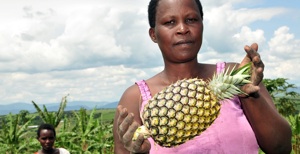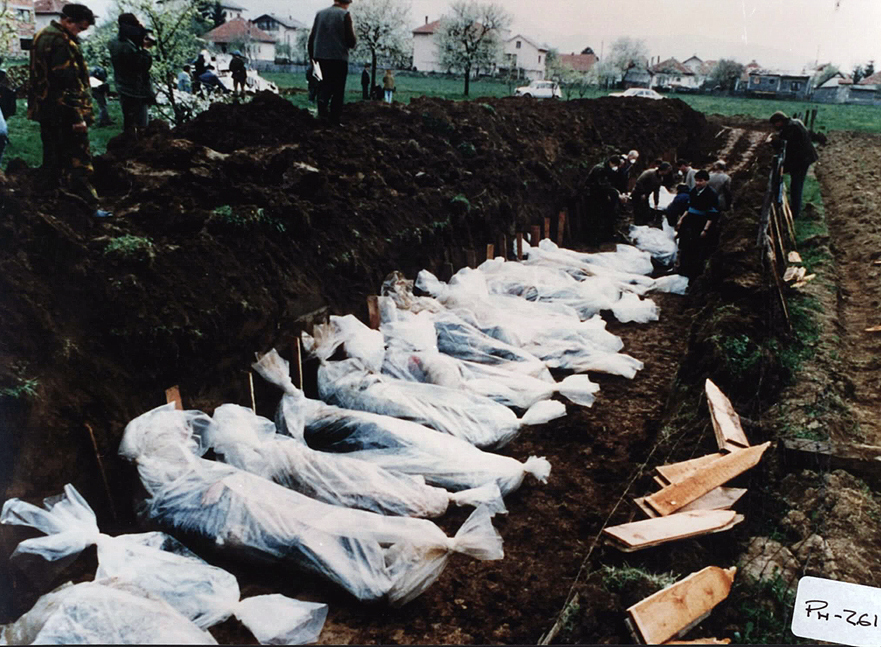Sustainable agriculture is critical for Africa’s future. Photo: Center for Tropical Agriculture-Flckr
[Commentary: Sustainable Agriculture]
Although Uganda boasts of being able to feed her population adequately and generate surplus for export to neighboring countries and beyond, the record shows that millions of Ugandans go to bed hungry every night.
Many of those who eat have one meal a day of nutritionally deficient diet leading to under-nutrition and many associated problems.
More disturbing and in need of urgent attention is the current famine that is spreading to many parts of Uganda including Teso, Isingiro, Kanungu and Rukungiri districts. In these districts people are dying of starvation.
They have been unable to produce food because of drought or to access food from outside their districts because they are poor. Women and children are being adversely affected disproportionately. To avert the current famine will require immediate humanitarian action from national and international sources particularly the Rome-based World Food Program (WFP).
Long-term policies and strategies will be needed to prevent future droughts and floods that have reduced food production caused by adverse changes in the county’s hydrological and thermal patterns and to balance food production for domestic consumption and for export. A poverty-reduction strategy needs to be accelerated to improve the purchasing power of millions still trapped in absolute poverty so that families have sufficient means to access adequate and balanced diet for a healthy and active life.
With immediate effect, we are calling on the National Resistance Movement (NRM) government to make an appeal or to repeat it if it has already done so to the World Food Program and our partners to contribute food and water generously for urgent distribution to those in need. It has been reported that the desperate people of Rukungiri district have already called for urgent help in terms of food and water to save lives.
We are also calling on Uganda ambassadors to the United States, United Kingdom, the European Union, the United Nation in New York and Rome, Italy where WFP is based to urge those concerned to act with the urgency that averting this catastrophe deserves.
For long-term remedies, the Uganda government will need to make changes in its policies and strategies to ensure sustainable agriculture in terms of land use for crop production and livestock herding. The current practice of clearing large swathes of vegetation to grow food and non-food crops like flowers, coffee, tea, tobacco, sugar and cotton and large-scale ranches for cattle and goats for export purposes has resulted in adverse hydrological and thermal patterns.
Consequently, rainfall has increasingly become irregular in timing, amount and duration while the dry season has become hotter and longer in large part due to human activities which I detailed in an article I wrote for the Paris conference on climate change and global warming. It was published by Seton Hall University in the United States.
The current environmental challenge can be traced to the policies introduced by the Idi Amin regime in the 1970s to clear every unutilized land for crop production and livestock herding purposes. Areas that had been protected like wetlands, water catchment areas, steep slopes and other fragile areas unsuitable for agriculture were converted into farms and ranches with serious environmental consequences. For example, in Kabale district, a 12- mile wetland was drained to graze imported cattle. The immediate result was an increase in temperature that attracted mosquitoes and spread malaria that wreaked havoc on populations especially children that had no immunity. The district was declared an emergency area to save lives.
In Rukungiri, my home district, the area was known for its thick vegetation, grasslands, wetlands, perennial rivers — all teeming with wild animals, fish and birds as well as wild fruits and vegetables. Hunting animals, guinea fowls and partridges and river fishing provided a rich and regular source of protein. Wild fruits and vegetables added minerals and vitamins to diets. Rainfall was adequate and permitted two growing seasons so that there was plenty of food throughout the year.
Then there were major policy changes beginning in the 1950s. Until then Rukungiri or Rujumbura to be more precise was a labor reserve to supply cheap labor to Uganda’s economic growth poles in Buganda and Busoga. Accordingly all the land, particularly the fertile lowlands, was used to grow food for local consumption.
The wetlands, steep slopes and water catchment areas were declared protected from agriculture. The introduction of coffee after World War II replaced crops in the fertile areas. Consequently, food production shifted to less fertile areas and steep slopes, resulting in lower productivity, soil erosion and reduced soil fertility that reduced food production further. Contrary to popular belief, it was not population growth that caused food shortages.
Beginning in the late 1950s, Rujumbura was earmarked by colonial authorities as a resettlement area to ease population pressure in the Kabale area that had been made worse by refugees particularly from Rwanda due to the 1959 social revolution there. Consequently, pressure for land increased and more vegetation was cleared to grow food, graze cattle and goats and coffee and later tobacco with serious ecological outcomes and reduced food production.
As mentioned above, the Amin regime policy of clearing any available land for agricultural production resulted in massive de-vegetation. Areas that had been conserved for various purposes were brought under cultivation. In my home area stretching from Omukarere to Katwekamwe, Rwabwanga and Mugamba that had thick vegetation, wetlands and permanent rivers was cleared for agricultural purposes mercilessly. Some parts turned into a semi-desert, streams dried up or became seasonal, fuel wood became scarce and thatching grass disappeared altogether.
The NRM government policy of agricultural production for cash than for the stomach has resulted in further damage to the environment and a shortage of food as more food is being sold to buy roofing materials, raise money for medical and education bills, among other expenses like cell phones and air time.
The combination of these forces particularly in the cattle corridor stretching from northeast in Karamoja to southwest in Ntugamo districts where huge ranches for cattle and goats are being developed for export purposes, are destroying the environment very rapidly. In 1997 a workshop of experts and Uganda officials was organized in Uganda. The presentation showed the adverse impact of unsustainable agricultural development on drought and climate variability, increased hunger and famine due to crop failure on account of drought and heavy rains and flooding, unpredictability in the seasonal cropping calendar, increased land degradation and the destruction of wetlands.
Subsequent reports have indicated that if corrective measures are not taken as soon as possible, 80 percent of Uganda could turn into a desert within 100 years which is a short time by historical standards.
Despite these findings and government statements to act, not much has been accomplished in adapting human activity to realize sustainable development for present and future generations. With concerted effort by the government and development partners the current famine and future famines can be averted and save lives in present and future generations.
However, this will require adaptation in the agricultural policies to balance agricultural production for domestic consumption and for export purposes, development of human skills to reduce population that depends on agriculture, modernization of agriculture to increase productivity per unit of land and a reduction in extensive clearance of large swathes of vegetation.
Water catchment areas and bodies as well as wetlands and fragile ecosystems need protection to ensure restoration of hydrological, thermal and ecological systems that Winston Churchill described at the start of the 20th century. Demonstrations have shown that Uganda can regain its status as the Pearl of Africa.
Kashambuzi is an international economist and a political commentator.







